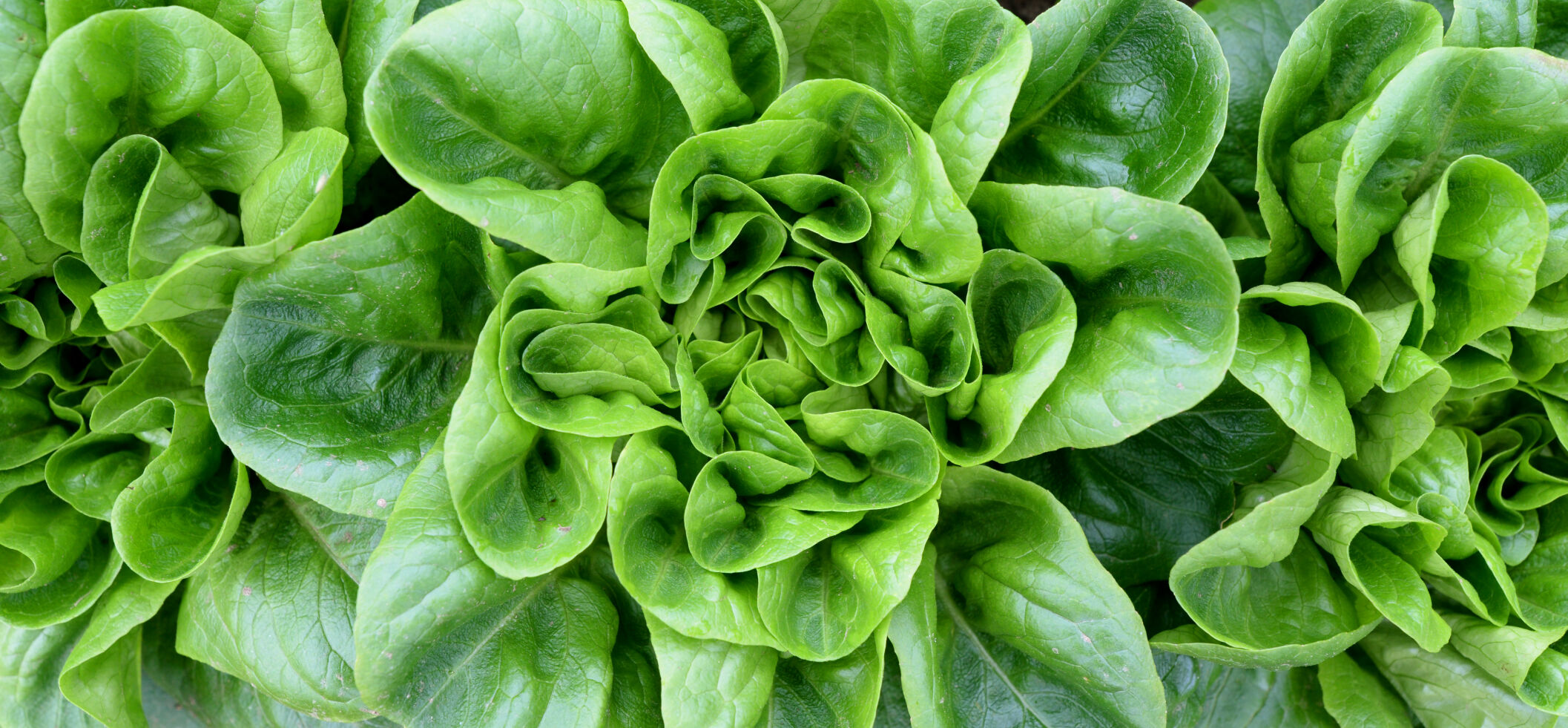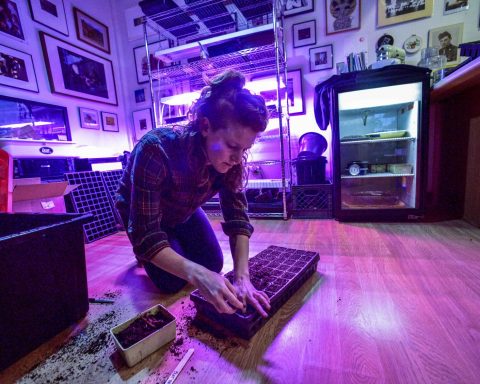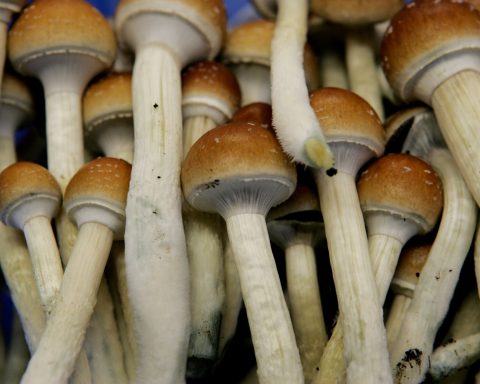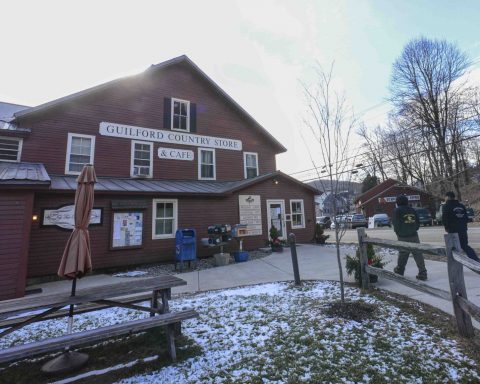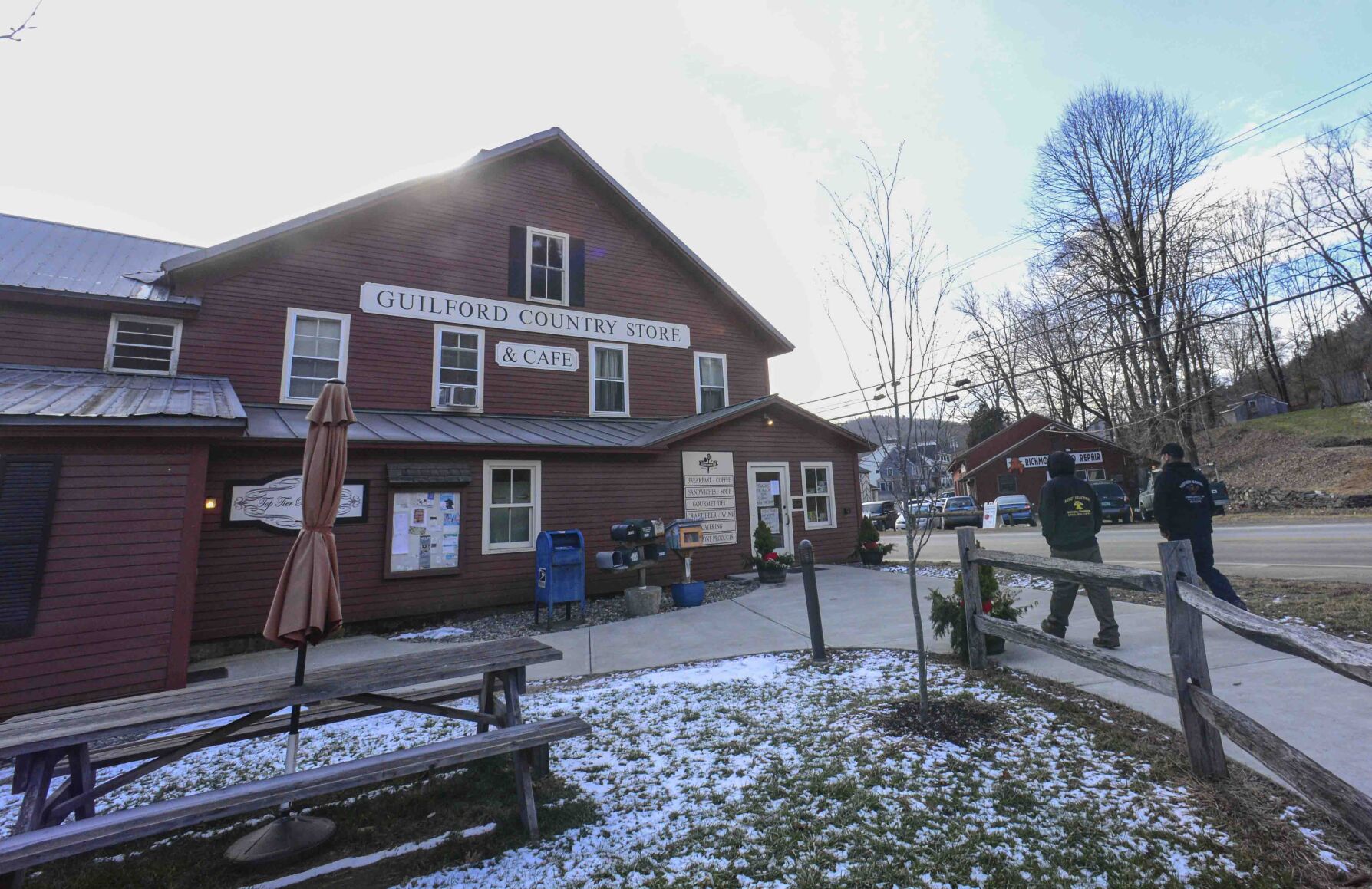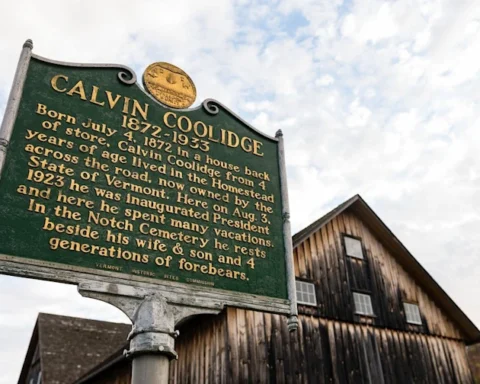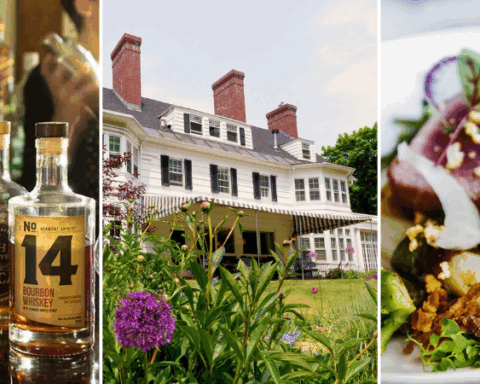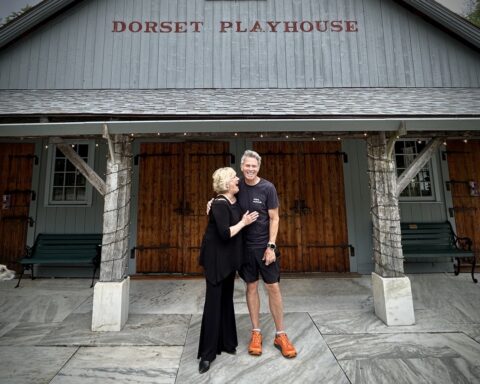By Gordon Dossett, Vermont Country
Pure snow lies shoved off roads, lumped in piles like broken promises. We long for spring and summer warmth.
We may hear an alluring voice, expressing an age-old sentiment: “Gather ye rosebuds while ye may.” But before we can gather actual rosebuds, we need planted roses, and if we have them, we need to nurture them. So we flock to nurseries, a rite of passage in spring, seeking to plant and cultivate our gardens.
For many of us in the Northshire, a favorite spot is Clear Brook Farm, where owner Andrew Knafel and his team dance with the seasons, balancing customer desires, a shifting climate, and the needs of trees, shrubs, flowers, herbs, fruits and vegetables. When I met with him in January, it was a barebones, mostly dormant farm we toured. Clear Brook offers an every-other-week deep winter CSA (Community Supported Agriculture) — boxes of produce delivered to those who request them. On the day of my visit, Becca Knouss, Rosie Oceanna and Adam Wigger picked greenhouse kale and lettuce. The farm called for some maintenance, such as mending the deer fences. (Knafel found out years ago — when he spotted some 45 deer in a 4-acre field grazing on his finely cultivated crops — that normal fences weren’t enough.)
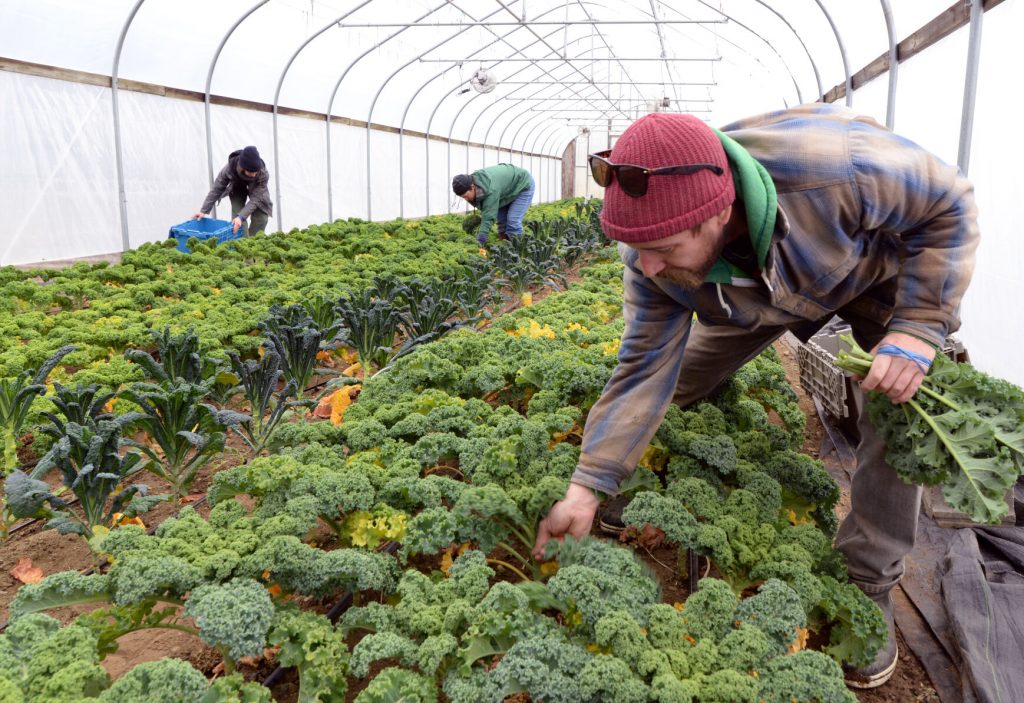
Knafel took a winding path to Clear Brook. In high school, a friend pointed out a program that called for volunteering at a national park. That program (the Student Conservation Association) was the brainchild of Shaftsbury resident Liz Putnam(profiled recently in Vermont News & Media). Knafel was assigned to Zion National Park. “I felt so lucky to come across that program. … It really did change the trajectory of my life.” Afterward, he worked at the Walker Farm and various other horticultural spots until starting Clear Brook in 1995. From its small beginnings, it now employs 25 to 28 full-time employees at the height of the season, many of whom have worked at Clear Brook for years.
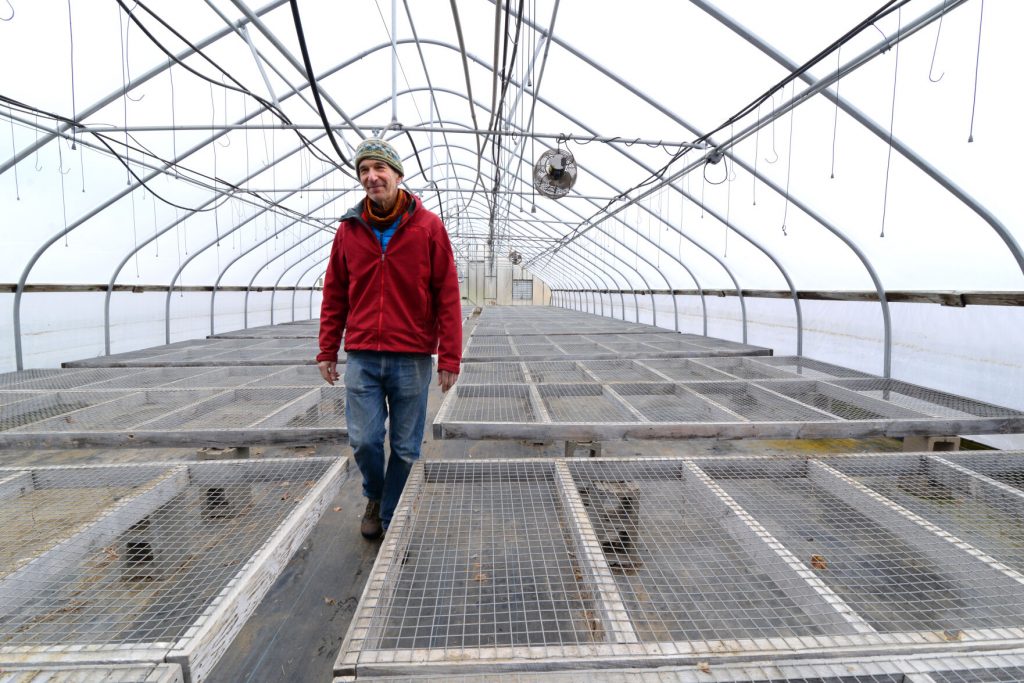
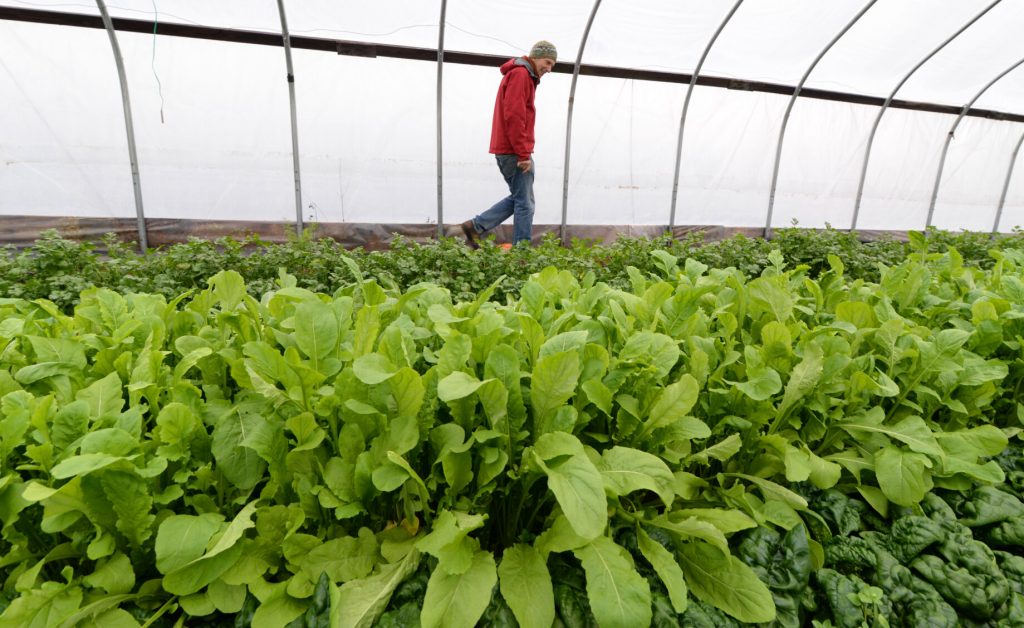
Work at the nursery begins in earnest in March with the core crew preparing the bedding, baskets and boxes. To amend the soil and add needed nitrogen, Clear Brook plants some fields with oats and peas and in spring, tills them under. Rye grass turned under also helps prepare the soil.
By April, half the staff is on. “Come May I can’t get enough help. I’m waiting for the college kids to get here. … I’m holding on. Everybody does double-time.”
The soft opening is the last weekend in April; the full opening usually is the weekend before Mother’s Day. “We don’t look back till the end of August.”
Produce at the farm stand goes on sale in early June — strawberries, greenhouse tomatoes, greens — all organic.
When considering when to plant, Knafel says to local gardeners, “You don’t gain much by planting early.” He cites an example. If you plant potatoes the first week of May, the ground is cold, so potatoes don’t have much early growth. By waiting a couple of weeks, the potatoes would sprout quickly and gardeners would have less chance of rot. “It’s just better to wait that extra week or two.” He’s had people lose a whole garden to frost by planting too early. “We don’t sell an insurance policy, I’m afraid.”
People ask him: “How do you get your stuff to look so good?” His short answer is: “Well, we’re professionals.” They know soil and water amounts. They have greenhouses. They have “tricks,” Knafel says, smiling.
Pressed to name one, Knafel cites Reemay row covers with hoops — a fine mesh to protect crops from bugs and provide a partial greenhouse effect. Plastic covers often keep in too much heat. Another trick: early crops, for example, beets, are transplants, started in greenhouses, which gives a three- or four-week jump on the season. Sweet corn is all transplanted. Being organic, the corn has no fungicide on the seed. “New varieties rot really easily.” Using transplants avoids dead spots. Local gardeners can buy transplants, the same varieties that Clear Brook grows to harvest.
Some draws at the nursery are consistent year after year: strawberries in June, greenhouse tomatoes, sweet corn, greens. Peaches are the biggest seller not grown on site. Knafel cites Scott Farm in Dummerston as having some success with peaches and notes the Hudson Valley has better conditions for them. “Here [in the Northshire], it can be tricky.” Still, last year, a customer brought in a bowl of peaches grown from a tree bought at Clear Brook, and “they were amazing.”
Knafel has seen some trends in purchasing, citing Martha Stewart’s influence starting in the early 2000s in encouraging annual plantings beyond “your annual marigolds and petunias.” In times of uncertainty, vegetable starts are huge. “The first year of COVID, we opened May 15 … and we sold out of everything in two weeks.” That year — 2020 — was the nursery’s biggest “by a huge amount” up until that point. Online sales really didn’t succeed, but having open air markets allowed people to sidestep the closed-in spaces of grocery stores and buy good, fresh produce.
Mettowee Mint
Up north a bit in Dorset, the Mettowee Mint nursery hunkers down in winter but stays open Thursdays through Sundays — selling cut flowers, tropical plants and espressos to the public eager to commune with nursery plants and nursery people.
The name Mettowee Mint, by the way, harkens back to the local Mohican tribe, the area’s plentiful wild mint, and the copper mint that stamped pennies in Rupert briefly in the 18th century.
Owner Sarah Linford bought the Mettowee Mint three years ago — mid-COVID — and found, as did Clear Brook Nursery, that many locals had a “new-found enthusiasm” for gardening when business opened up. Her nursery does a huge business in annuals since many customers like “lush, colorful” displays. Mettowee begins growing annuals on site starting mid-February. It has a dozen greenhouses and 16 acres. Surprisingly, last year, the nursery had an especially strong demand for black flowers.
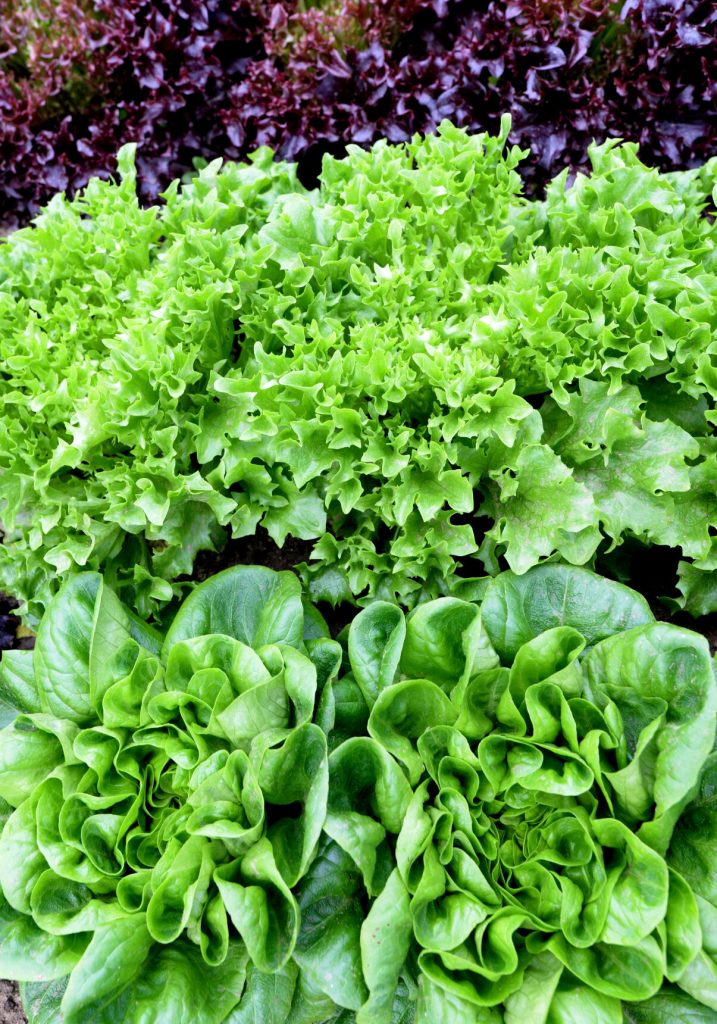
Mettowee Mint has a range of perennials, herbs, shrubs and trees appropriate for the climate. A few gardeners plant in April — those with covered gardens or a green death wish — but in May, the public streams in, and “it’s a zoo for a little while,” Linford told me in a phone interview.
Given Mettowee’s year-round schedule, Linford is especially happy about a recent addition: a heating system supported by the Rural Energy for America Program and Efficiency Vermont. Its new wood gasification boiler, the result of a year-long procurement effort, provides efficient, environmentally friendly heating for all buildings on site.
Equinox Valley Nursery in Manchester is another option for local gardeners, but being in full hibernation, staff did not respond to interview requests.
Wherever you go for spring planting, “Gather ye rosebuds while ye may,” as poet Robert Herrick writes, “Old time is still a-flying;/ And this same flower that smiles today/ Tomorrow will be dying.” But in gardening, there is always next season, and the promise of spring and more rosebuds awaits.
Gordon Dossett traded the traffic and urban ugliness of Los Angeles for the Green Mountains. He lives with his teenaged children, a cat and a dog, packing urban sprawl into one home. He likes making to-do lists and losing them.
